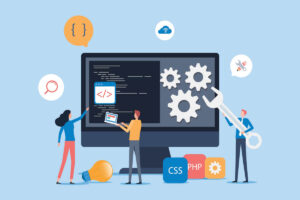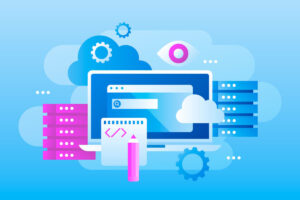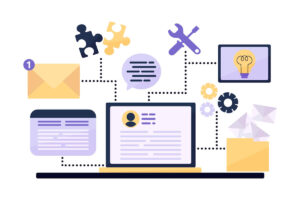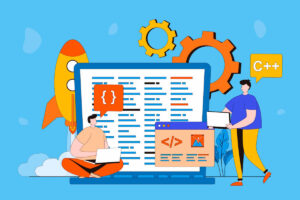The evolution of technology and the rapid pace of software development have necessitated a shift towards more efficient and reliable deployment processes. Particularly in the PHP development sphere, automating deployment has emerged as a critical component of DevOps, streamlining the transition from coding to production. In this blog, we’ll explore the best practices for PHP DevOps, focusing on automating deployment processes and how they can significantly benefit your project.
Why Automate Your Deployment Process
Automating your deployment process in the realm of PHP DevOps brings to the forefront several undeniable advantages that cater to the demanding nature of modern software development. Among these benefits are the invaluable gains in speed and efficiency, which are paramount in a competitive market. When deployment procedures are automated, the time and resources typically consumed by manual deployment are significantly reduced. This efficiency not only accelerates the deployment cycle but also allows developers to focus more on creating and refining code rather than the logistics of deployment.
Another compelling reason to automate your deployment process is the substantial reduction in manual errors. Human involvement in repetitive deployment tasks often leads to mistakes that can disrupt the deployment process or, worse, lead to downtime. Automating these processes minimizes these errors, ensuring a more stable and reliable deployment.
Key Components of an Automated Deployment Pipeline
A robust automated deployment pipeline is pivotal for realizing the full potential of PHP DevOps. This pipeline typically incorporates several key components:
Source Control Management
Tools like Git offer a centralized repository for your codebase. They enable team collaboration, version control, and a historical record of changes. This forms the foundation of any automated deployment pipeline. It ensures that the code to be deployed is properly managed and versioned.
Continuous Integration (CI) Tools
CI tools like Jenkins or GitLab CI automate integration code changes from multiple contributors into a single project. They also facilitate automatic testing of code changes to ensure the codebase remains stable and functional after each integration. This is essential for a seamless deployment process.
Continuous Deployment (CD) Tools
Building on continuous integration, continuous deployment tools automate the delivery of code changes to various environments. They empower the automatic deployment of validated code to production environments, guaranteeing swift and dependable delivery of new features and fixes to users.
The combination of speed, efficiency, reduced manual errors, and consistency across environments underscores the immense value of automating the deployment process in PHP DevOps. The structured approach provided by the key components of an automated deployment pipeline further enhances its benefits. Adopting these practices not only streamlines the deployment process but also enhances the overall quality and reliability of software projects.
Best Practices for Automating Deployment
In the realm of PHP DevOps, applying best practices for automating the deployment process can significantly enhance the efficiency and reliability of software delivery. Here are pivotal strategies to consider:
Robust Version Control System
By leveraging Git as your version control system, you meticulously track every piece of code, fostering collaboration and minimizing conflicts in the PHP development lifecycle.
Employing CI/CD
Continuous Integration (CI) and Continuous Deployment (CD) tools such as Jenkins and GitLab CI play a crucial role. They automate the testing and deployment process, ensuring that every change is seamlessly integrated and deployed, respecting PHP design patterns for maintainable code.
Effective Dependency Management
Utilizing Composer for managing PHP dependencies streamlines the inclusion of external libraries and frameworks, making it simpler to keep them updated and compatible across different environments.
Containerization
Docker emerges as a game-changer for PHP applications, offering a consistent environment for development, testing, and production. This minimizes the “works on my machine” syndrome and paves the way for easier scalability and deployment.
Database Management
Incorporating database migrations into your deployment process ensures consistent application of database schemas across all environments. Additionally, including data seeding eliminates the need for manual interventions by providing initial datasets.
Tools and Technologies for PHP Deployment Automation
Adopting the right tools is paramount for effective PHP DevOps practices. Here are some of the key technologies:
- Version Control: Git stands unrivaled for tracking changes and collaborating on PHP projects, reinforcing the importance of a solid foundation in version control.
- Continuous Integration: Jenkins and GitLab CI automate the building, testing, and merging of code changes, aligning with PHP design patterns for robust application development.
- Deployment: Tools like Deployer, Envoyer, and AWS CodeDeploy automate the deployment process, making it swift and error-free. They ensure that PHP applications are efficiently rolled out to production environments.
- Containerization and Orchestration: Docker provides a standardized unit for software development, packaging, and deployment, while Kubernetes orchestrates containerized applications, optimizing resource utilization and scalability.
Incorporating these best practices and tools into your PHP DevOps workflow streamlines development and deployment. Additionally, it fosters a culture of innovation and continuous improvement.
Security Considerations in Automated Deployments
In the realm of automated deployments, safeguarding sensitive information and maintaining a secure environment are of paramount importance. Below are some critical concepts to implement:
Secure Handling of Sensitive Information
It is crucial to ensure that API keys, database credentials, and other sensitive information are not hard-coded into your codebase. Techniques such as using environment variables or secret management services can drastically reduce the risk of exposure.
Regularly Updating Dependencies
Dependencies in your PHP project can be a hidden source of vulnerabilities. Regularly updating these dependencies ensures that security issues are addressed promptly, minimizing the risk of exploitation.
Implementing Access Controls
Define and enforce access control policies to ensure that only authorized individuals have access to deploy applications and manage the deployment environments. This reduces the risk of unauthorized changes and potential security breaches.
Audit Trails
Keeping comprehensive logs of who did what and when in your deployment process is essential for tracking changes and investigating security incidents. Implementing a robust logging and monitoring system helps in maintaining a secure and accountable deployment pipeline.
By integrating these security practices into your PHP DevOps strategy, you can achieve a secure, efficient, and reliable automated deployment process. This ensures the protection of both your applications and the data they handle.
Conclusion
Automating deployment processes within PHP DevOps offers significant advantages. It speeds up the delivery cycle and enhances the reliability of releases. By adhering to outlined best practices and leveraging the right tools and technologies, teams can achieve more efficient, secure, and consistent deployments. The future of PHP DevOps holds exciting prospects. Adopting these automation strategies now will place your projects at the forefront of innovation. Incorporating these practices into your PHP projects streamlines workflows and prepares your team for upcoming advancements in PHP DevOps. Contact us today and discover how we can help you implement these strategies to take your PHP projects to the next level!












+ There are no comments
Add yours